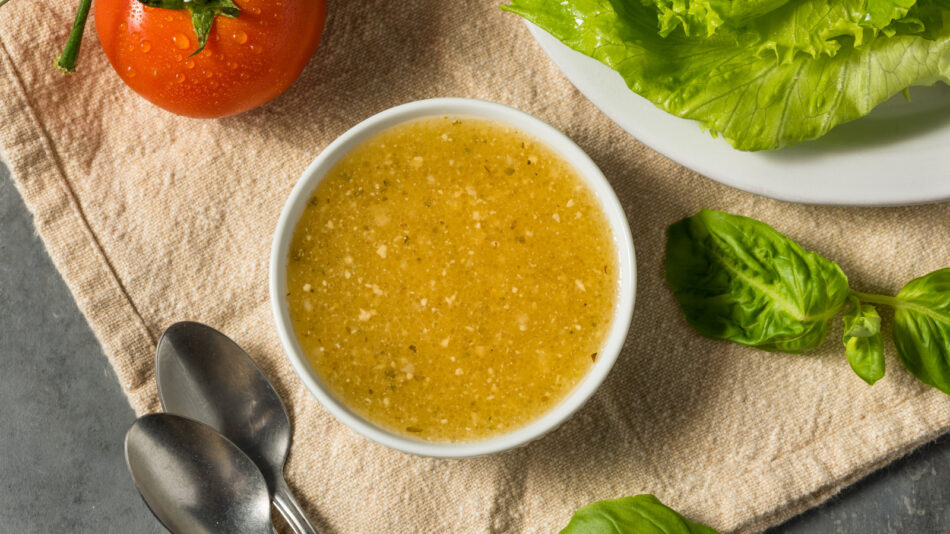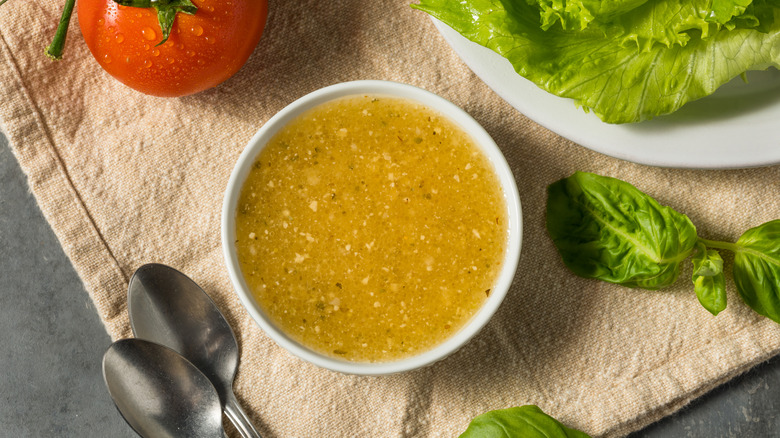Contrary to popular belief and the way it evokes sunny, coastal visions, the infamous Italian dressing did not descend from the hills of Tuscany or come together in an Amalfi diner. In fact, it did not even originate from Italy, despite what the name might suggest. Tracing the roots of how it came to be, you will find that the Italian dressing is, in many different ways, an American creation.
Back in 1948, the Wishbone Restaurant was opened in Kansas City, Missouri, by former U.S. soldier Phillip Sollomi, offering prime ribs, fried chicken, and other classic American favorites. Amongst those dishes is a salad tossed in a zesty, herby vinaigrette dressing — supposedly courtesy of the owner’s Italian immigrant mother and her Sicilian family recipe. It became such a wildly successful sensation that Sollomi sold the restaurant in 1952 and switched entirely to manufacturing salad dressing. Nowadays, those golden bottles of the Wish-Bone Italian dressing in U.S. supermarkets everywhere — one of the most popular store-bought Italian salad dressings out there.
A few years before Wishbone’s debut, a Massachusetts-based steakhouse named Ken’s Steak House was also selling a similar dressing in 1941. There, Florence Bacigalupo Hanna—the owner’s wife and daughter of Italian immigrants—made the sauce from scratch, which was then bottled and sold to grocery stores. In 1958, the couple launched Ken’s Foods Inc. in partnership with Frank and Louise Crowley, officially mass-producing the dressing. Over time, the business evolved into the dressing and sauces success that we’ve come to know.
A non-traditional dressing that wears many hats
Even though it’s not authentically Italian, the dressing still uses staples from the cuisine itself. In Florence Bacigalupo Hanna’s original version, it’s a mixture of oil and vinegar with aromatics such as garlic and onions. Meanwhile, Lena Sollomi made hers with a similar base, but dressed it up with spices and fresh herbs. Journeying through decades of culinary interpretations across factories, restaurants, diners, and home kitchens, this dressing has taken on a great many other iterations. Some recipes feature wine vinegar, olive oil, and Italian seasonings; others center around beloved Italian herbs like basil and oregano. Some even throw in a pinch of Parmesan cheese for a rich, tangy edge.
Endlessly adaptable and flavorful, this dressing has undoubtedly carved out an irreplaceable spot in Italian-American cuisine. It’s the missing piece you need for a bowl of antipasti Italian pasta salad, or a good old panzanella. Beyond the dressing label, its versatility branches out into savory meat marinades, a pre-grill glaze for flavor-packed barbecues, and a condiment for just about any dish that could use a little brightening up.
That said, you likely won’t find bottled Italian dressings when you’re dining in its namesake country. The way restaurants in Italy usually serve salads is much less elaborate, with the dressing including only three things: salt, oil, and vinegar. This concoction may be minimal, but with careful picking and measuring of each individual ingredient, its main goal is to highlight the veggies’ natural freshness rather than elevating the overall flavor profile.











